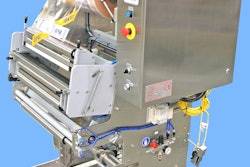
(Editor’s note: This article comes from the Regulatory Affairs Professionals Society, a global organization of and for those involved with the regulation of healthcare and related products, including medical devices, pharmaceuticals, biologics, and nutraceutical products.)
Medical devices—and the patients who use them—would substantially benefit from a National Medical Device Postmarket Surveillance System (MDS), charges a new report authored by the Brookings Institution's Engelberg Center for Health Reform with support from the U.S. FDA.
The report, Strengthening Patient Care: Building an Effective National Medical Device Surveillance System, comes nearly three years after FDA's Center for Devices and Radiological Health (CDRH) published what it said was an "action plan" meant to improve how the U.S. tracked device safety and efficacy prior to approval.
FDA already tracks the safety and performance of pharmaceutical products through its Sentinel Initiative, but no such system now exists for tracking device performance on a systematic level.
That, regulators hope, is a situation set to soon change. Thanks to recent regulations, which call for the implementation of a Unique Device Identification (UDI) number for almost all devices marketed in the U.S., devices will soon be easier to keep track of than ever before. In addition, it will be easier to implement device data into electronic health records and databases, meaning regulators will find it easier to determine how devices are performing and whether patients are benefiting as expected.
The report, issued on Feb. 23, 2015, is meant to outline what a "21st Century" device surveillance system should look like, what steps should be taken to create the MDS and how it should be implemented.
As explained by CDRH Director Jeffery Shuren in a posting on FDA's Voice blog, the new system will leverage "new tools and systems unimaginable a generation ago," giving regulators "real-time data about what happens to patients in clinical practice."
"We will be able to leverage these capabilities not only to quickly identify poorly performing devices, but also to facilitate device approval/clearance and patient access, to reduce postmarket data collection for manufacturers, and to better inform healthcare decisions by providers and patients alike," Shuren added.
Assuming the system is similar to FDA's Sentinel initiative, it will take patient-anonymized data obtained from large healthcare providers—e.g. hospital systems and insurers—and sift through it to find evidence of safety and efficacy. As Brookings and FDA note in their report, FDA's MDS is not envisioned to be a "stand-alone system."
"Rather, MDS should build upon and coordinate with existing public and private sector programs to leverage their expertise and resources. For example, MDS should support Congress’ mandate to include medical devices into the Sentinel Initiative, as well as coordinate with [the Patient-Centered Outcomes Research Institute] on their efforts to build a national research network."
As with FDA's Sentinel Initiative, which is administered with help from Brookings, the report envisions the MDS as being run by a "multi-stakeholder public-private partnership," which the report says would help advance transparency and participation in the system.
The report also includes an outline of planned activities, with years one and two of the project focusing on starting up an "incubator project" meant to resource the MDS project and start a pilot project, and years three through seven of the project focusing on implementing the full MDS and leveraging FDA's new UDI system.






















